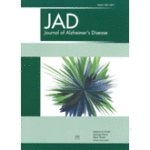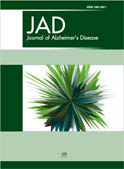Published in the March 6 issue of the Journal of Alzheimer’s Disease, the early findings show that vitamin D3 may activate key genes and cellular signalling networks to help stimulate the immune system to clear the amyloid-beta protein.[1]
Previous laboratory work by the team demonstrated that specific types of immune cells in patients with Alzheimer’s disease may respond to therapy with vitamin D3 and curcumin, a chemical found in turmeric spice, by stimulating the innate immune system to clear amyloid beta. But the researchers didn’t know how it worked.
“This new study helped clarify the key mechanisms involved, which will help us better understand the usefulness of vitamin D3 and curcumin as possible therapies for Alzheimer’s disease,”
..said lead author Milan Fiala, MD, David Geffen School of Medicine at the University of California Los Angeles, and the Veterans Affairs Greater Los Angeles Healthcare System, Los Angeles, California.
For the study, Dr. Fiala and colleagues drew blood samples from patients with Alzheimer’s disease and healthy controls and then isolated critical immune cells from macrophages. The investigators incubated the immune cells overnight with amyloid beta. An active form of vitamin D33 called 1-alfa,25–dihydroxyvitamin D3 (1,25-VD), which is made in the body by enzymatic conversion in the liver and kidneys, was added to some of the cells to gauge the effect it had on amyloid beta absorption.
Previous work by the team, based on the function of Alzheimer’s patients’ macrophages, showed that there are at least 2 types of patients and macrophages: Type 1 macrophages are improved by addition of (1,25-VD) and curcuminoids (a synthetic form of curcumin), while Type 2 macrophages are improved only by adding (1,25-VD).
In the present study, the researchers found that in both Type 1 and Type 2 macrophages, the added (1,25-VD)played a key role in opening a specific chloride channel called “chloride channel 3 (CLC3),” which is important in supporting the uptake of amyloid beta through the process known as phagocytosis. Curcuminoids activated this chloride channel only in Type 1 macrophages.
The scientists also found that (1,25-VD) strongly helped trigger the genetic transcription of the chloride channel and the receptor for (1,25-VD) in Type 2 macrophages. Transcription is the first step leading to gene expression.
The mechanisms behind the effects of (1,25-VD) on phagocytosis were complex and dependent on calcium and signalling by the “MAPK” pathway, which helps communicate a signal from the vitamin D3 receptor located on the surface of a cell to the DNA in the cell’s nucleus.
According to the team, one of the next stages of research would be a clinical trial with vitamin D to assess the impact on patients with Alzheimer’s disease. Previous studies by other teams have shown that a low serum level of 25–hydroxyvitamin D3 may be associated with cognitive decline.
It is too early to recommend a definitive dosage of vitamin D3 to help with Alzheimer’s disease and brain health, the researchers said. They add that ongoing studies are showing that vitamin D3 may be beneficial in reducing the incidence of a growing number of human diseases.
SOURCE: University of California – Los Angeles Health Sciences
Reference
[1] Mizwicki MT, Menegaz D, Zhang J, Barrientos-Durán A, Tse S, Cashman JR, Griffin PR, Fiala M. Genomic and Nongenomic Signaling Induced by 1α,25(OH)2-Vitamin D3 Promotes the Recovery of Amyloid-β Phagocytosis by Alzheimer’s Disease Macrophages. J Alzheimers Dis. 2012 Jan 1;29(1):51-62. View Abstract






